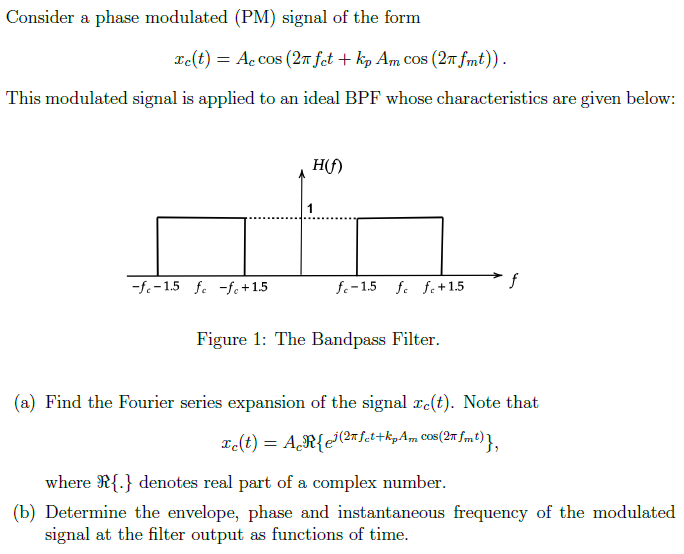Consider a phase modulated (PM) signal of the form xc(t) = Accos(2πfct + kpAmcos(2πfmt)). This modulated signal is applied to an ideal BPF whose characteristics are given below: Figure 1: The Bandpass Filter. (a) Find the Fourier series expansion of the signal xc(t). Note that xc(t) = Acℜ{ej(2πfct + kpAmcos(2πfmt)}, where ℜ{. } denotes real part of a complex number. (b) Determine the envelope, phase and instantaneous frequency of the modulated signal at the filter output as functions of time.
